We live in a digital-first world—one where webinars have now become an essential tool for marketers, educators, and businesses. As a convenient way to share knowledge, generate leads, and connect with audiences across the globe, webinars are a must-have for any modern business.
But this presents a challenge: webinars must compete with so many other virtual events for attention, which makes standing out a real challenge.
One of the biggest pitfalls of webinars is a lack of interaction. When audiences are treated as passive viewers rather than active participants, engagement drops, attention wanders, and the overall impact suffers. The solution? Make your webinar interactive.
In this blog, we’ll explore why interactivity is critical for overall webinar success, practical tactics to boost audience engagement, and best practices to ensure a seamless and valuable experience. Whether you're a seasoned marketer or hosting your first event, these insights will help you create webinars that truly resonate with your target audience.
Content:- Why Making Webinars Interactive is Valuable
- Interactive Tactics to Boost Engagement
- Best Practices for Using Interactive Elements
- Plan Your Next Interactive Webinar
Why Making Webinars Interactive is Valuable
Before diving into how to make a webinar interactive, let’s understand why it matters. According to On24’s 2023 Engagement Report, webinars that feature interactive elements saw a 33% increase in attendee retention during their events and a 22% longer average viewing time.
The success of any webinar hinges on audience engagement. Without it, even the most informative content can fall flat. Interactivity is not just a way to keep people entertained—it’s a strategic tool that enhances learning, builds connections, and delivers better outcomes for both presenters and attendees.
Here are the key reasons why adding interactive elements to your webinar is so valuable:
- Keeps Audience Attention: Interactive features break up the monotony of one-way presentations, encouraging attendees to stay focused and involved.
- Enhances Learning: Engagement tools like polls, quizzes, and Q&As turn passive listening into active participation, reinforcing key messages.
- Fosters Community: Encouraging real-time interaction helps build a sense of community, making attendees feel seen and heard.
- Provides Real-Time Feedback: Interactive elements offer instant insights into audience interests, questions, and understanding, allowing presenters to adapt in real-time.
In short, interactivity transforms webinars from static broadcasts into dynamic, two-way conversations.

Interactive Tactics to Boost Engagement
Knowing that interaction is vital is just the first step. The real challenge is putting it into practice. Fortunately, there are several tried-and-true tactics you can use to create an engaging and interactive webinar experience.
Let’s break down three of the most effective methods: polls, quizzes, and live Q&A sessions.
1. Polls: Spark Real-Time Reactions
Polls are one of the simplest and most effective ways to involve your audience. By inviting attendees to share their opinions or test their knowledge, you create an immediate sense of participation.
Here’s how to use polls strategically:
- Plan Ahead: Craft poll questions that align with your webinar’s key themes. These questions should prompt thoughtful responses and stimulate discussion.
- Guide the Conversation: Use poll results to steer your presentation, highlighting trends, opinions, or surprising insights that emerge.
- Live Commentary: Encourage speakers to react to poll results in real-time. This keeps the experience dynamic and shows that audience input is valued.time. This keeps the experience dynamic and shows that audience input is valued.
Polls can serve as powerful icebreakers, reignite interest during mid-webinar lulls, and provide valuable data for post-event analysis.
2. Quizzes: Reinforce Learning & Make It Fun
Quizzes aren’t just for the classroom—they’re a fantastic engagement tool for webinars. When designed thoughtfully, they can both entertain and educate.
Here’s how quizzes can enhance your webinar:
- Check for Understanding: Use quizzes to recap key points and ensure your audience is following along with the content.
- Offer Value-Add Resources: Connect quiz results to helpful resources, such as downloadable guides, follow-up articles, or exclusive content.
- Keep It Light-Hearted: Incorporate a playful tone to make quizzes feel fun and engaging rather than formal assessments.
By weaving in quizzes, you’ll not only boost audience interaction but also reinforce the learning objectives of your webinar in a memorable way.
3. Live Q&A: Create Two-Way Conversations
One of the best ways to engage your audience is to invite them into the conversation. A live Q&A session allows attendees to ask questions, seek clarification, and share their perspectives.
Here’s how to make your Q&A sessions impactful:
- Set Aside Dedicated Time: Rather than squeezing questions into the final minutes, allocate 15-20 minutes for Q&A at the end of the session.
- Enable Continuous Submissions: Allow attendees to submit questions at any time. This encourages participation and ensures important queries aren’t missed. Also, you can prime the pump by having your own team submit questions ahead of time to encourage thoughtful discussion among the attendees and the panelists.
- Moderate for Relevance: Appoint a moderator to filter and prioritize questions, keeping the discussion focused and on-topic.
- Foster Direct Engagement: Speakers should address questions conversationally, offering personal insights and practical examples to add depth.
A well-executed Q&A fosters genuine interaction, turning your webinar into a dialogue rather than a monologue.
60% of Net New Pipeline from Webinars
Discover how a B2B company used webinars to generate these results in just one year.
Best Practices for Using Interactive Elements
While interactive features are incredibly valuable, it’s important to use them wisely. Poorly executed interactions can feel gimmicky or disruptive, undermining the overall experience.
To ensure your interactive webinar hits the mark, follow these best practices:
- Prioritize Relevance: Every interactive element should serve a clear purpose. Avoid adding polls or quizzes just for the sake of it—make sure they enhance the content.
- Avoid Overloading the Audience: Too many interactive features can overwhelm participants and distract them from your core message. Focus on quality, not quantity.
- Strategic Timing is Key: Schedule interactive moments thoughtfully, such as during topic transitions or after complex segments, to maintain engagement without disrupting the flow.
- Maintain Balance: Aim for a seamless integration of content delivery and audience participation. Your webinar should feel like a well-paced conversation, not a disjointed series of activities.
By applying these principles, as well as key principles in promoting your webinar for high attendance, you can create an interactive experience that feels natural, engaging, and valuable for your audience.

Plan Your Next Interactive Webinar
Interactive webinars are essential for meaningful audience engagement. By incorporating tactics to create dynamic experiences that captivate your audience, drive participation, and deliver real value, webinars can be a more impactful tool to support your business goals, enhance the attendee experience, and foster genuine connections.
Plus, having an interactive event will translate to a more engaging follow-up with attendees, generating further conversations with your Sales team.
Want to turn passive viewers into active participants? Let’s build your next high-converting webinar together.








